#scan to revit bim model
Explore tagged Tumblr posts
Text
How Scan to BIM is Revolutionizing Renovation and Restoration Projects

The construction industry is undergoing a significant transformation, thanks to digital technologies that streamline processes, enhance efficiency, and improve project outcomes. One such innovation making waves in renovation and restoration projects is Scan to BIM (Building Information Modeling). This technology is changing how professionals approach old and damaged structures, ensuring accuracy, reducing risks, and saving time and costs. Let’s explore how Scan to BIM is revolutionizing renovation and restoration projects and why it has become a game-changer for architects, engineers, and contractors.
Understanding Scan to BIM
Scan to BIM is a process that involves capturing the physical attributes of a building using 3D laser scanning technology. The collected data, known as a point cloud, is then converted into a detailed Building Information Model (BIM). This digital representation provides accurate and comprehensive information about the building’s existing conditions, which is crucial for planning renovations and restorations.
The Scan to BIM process typically involves the following steps:
Laser Scanning – High-precision 3D laser scanners capture the existing structure’s dimensions, generating a dense point cloud.
Data Processing – The point cloud data is processed and converted into a usable format for BIM software.
BIM Modeling – The data is then used to create a detailed BIM model, which includes structural, architectural, and MEP (Mechanical, Electrical, and Plumbing) components.
Analysis and Planning – The BIM model serves as the foundation for analysis, renovation planning, and design development.
By leveraging Scan to BIM, professionals gain valuable insights into a building’s current state, enabling them to make informed decisions about renovations and restorations.
The Benefits of Scan to BIM in Renovation and Restoration
1. Accurate As-Built Documentation
One of the biggest challenges in renovation and restoration projects is the lack of accurate as-built drawings. Many older buildings may not have detailed blueprints or existing documentation may be outdated. Scan to BIM eliminates these issues by providing highly accurate digital documentation, ensuring that project teams work with precise measurements and conditions.
2. Improved Project Efficiency
Traditional surveying methods can be time-consuming and prone to human errors. With Scan to BIM, laser scanning captures millions of data points in minutes, significantly reducing the time required for site surveys. The automated nature of the process minimizes manual errors, ensuring that professionals have reliable data from the start.
3. Cost Savings
Errors and rework can be costly in renovation and restoration projects. By using Scan to BIM, project teams can identify potential issues early, reducing costly surprises and minimizing delays. Additionally, the accurate data provided by Scan to BIM helps optimize material usage, preventing unnecessary expenses.
4. Enhanced Collaboration and Communication
BIM models created from scan data provide a centralized digital representation of a building, which enhances collaboration among stakeholders. Architects, engineers, and contractors can work with the same detailed model, improving communication and coordination. This reduces misunderstandings and ensures that renovation plans are aligned with the existing structure.
5. Risk Reduction and Safety Improvements
Renovation and restoration projects often involve working with deteriorated structures, which can pose safety risks. Scan to BIM allows professionals to assess the condition of the building remotely, identifying structural weaknesses before starting physical work. This helps create safer work environments and reduces the likelihood of accidents.
6. Sustainability and Adaptive Reuse
Scan to BIM plays a crucial role in sustainable renovation practices. By accurately assessing existing structures, professionals can develop strategies for adaptive reuse rather than demolition. This reduces construction waste and supports environmentally friendly building practices.
Applications of Scan to BIM in Renovation and Restoration
Historic Building Preservation
Preserving historic buildings requires a delicate balance between maintaining original architectural features and modernizing infrastructure. Scan to BIM helps conservationists and architects document intricate details, ensuring that restoration efforts align with historical accuracy while incorporating necessary upgrades.
Structural Renovations
For buildings undergoing structural modifications, Scan to BIM provides engineers with detailed insights into load-bearing elements, foundation conditions, and potential weaknesses. This information is essential for reinforcing structures while maintaining safety and integrity.
MEP System Upgrades
Renovating mechanical, electrical, and plumbing systems in older buildings can be complex due to unknown existing conditions. Scan to BIM simplifies this process by providing accurate spatial data, allowing engineers to design efficient MEP systems without costly guesswork.
Commercial and Residential Retrofits
Whether updating office spaces, retail outlets, or residential properties, Scan to BIM ensures that renovation projects align with existing structures. This is particularly useful for integrating smart building technologies, energy-efficient systems, and modern design elements into older buildings.
The Future of Scan to BIM in Renovation
As technology continues to evolve, the future of Scan to BIM looks promising. Advancements in artificial intelligence (AI) and automation are expected to further enhance the efficiency of the Scan to BIM process, making it even more accessible and cost-effective. Additionally, integration with augmented reality (AR) and virtual reality (VR) will enable professionals to visualize renovation plans in immersive 3D environments before implementation.
Moreover, as sustainability and carbon footprint reduction become priorities in the construction industry, Scan to BIM will play a vital role in promoting adaptive reuse and minimizing construction waste.
Conclusion
Scan to BIM is transforming how renovation and restoration projects are executed, providing unmatched accuracy, efficiency, and cost savings. By enabling professionals to work with precise as-built documentation, improve collaboration, and enhance safety, this technology is proving to be a game-changer in the industry. As its adoption continues to grow, Scan to BIM will undoubtedly shape the future of renovation and restoration, ensuring that old and damaged structures can be revitalized with greater ease and precision.
#digital technologies#Scan to BIM#renovation#restoration#architects#engineers#BIM modeling#bim outsourcing services#revit modeling services#bim modeling services#bim modelling services#3d bim modeling services#outsource bim services#bim outsourcing#bim services provider#bim modeling service#outsourcing bim
0 notes
Text

Scan To BIM Services is a leading provider of cutting-edge scan-to-BIM solutions, transforming high-definition scans into precise, digital 3D models. With a commitment to delivering accuracy, innovation, and speed, we support the architecture, engineering, and construction (AEC) industries by converting laser scan data into detailed Building Information Models (BIM) that streamline project planning, renovations, and facility management. Our experienced team leverages advanced technology and industry best practices to provide end-to-end solutions, including 3D laser scanning, point cloud processing, and BIM model creation. Whether for heritage building preservation, large-scale industrial projects, or commercial developments, we deliver quality and precision to meet the unique needs of every client.
#scan to bim#bim services#bim technology#scan to revit family#building information modeling#scan to bim florida
0 notes
Text
BIM Modeling Services: Key to Accuracy and Seamless Collaboration

In the fast-evolving world of construction and architecture, one of the most significant technological advancements driving efficiency is Building Information Modeling (BIM). At the heart of this transformation lies BIM modeling services, which have become crucial in ensuring that projects are completed with precision, cost-effectiveness, and minimal disruption. These services offer a comprehensive approach to design, construction, and project management, emphasizing accuracy, collaboration, and streamlined workflows.

The Power of BIM Modeling Services
BIM modeling services allow architects, engineers, and construction teams to create detailed digital representations of physical and functional aspects of a project. Unlike traditional blueprints, BIM models include not only the geometric aspects of a building but also important data about materials, timelines, costs, and maintenance requirements. This multidimensional approach, which is often referred to as 3D BIM modeling, enables better visualization and planning, offering a clear roadmap for successful project completion.
One of the major advantages of BIM modeling services is the ability to catch errors early in the process. By having a 3D digital model of the building, project stakeholders can identify design inconsistencies, material conflicts, and even potential structural issues before they manifest in the physical world. This early detection of problems is critical for saving both time and money, which makes BIM modeling services indispensable for modern construction.
Enhancing Accuracy with 3D BIM Modeling
Accuracy is at the core of BIM modeling services, and 3D BIM modeling takes this to the next level. A 3D model adds depth and detail that allows all parties involved in the project—architects, engineers, and contractors—to have a clearer understanding of the design intent. 3D BIM modeling provides a visual representation that helps in better spatial planning, resource management, and conflict resolution.
One key benefit of 3D BIM modeling is its ability to create highly accurate and scalable models that can be updated in real-time. This makes it easy for all project members to stay on the same page. Whether the model is being used for design, construction, or maintenance, the integration of 3D data ensures that everyone has access to the most up-to-date information. With 3D BIM modeling, project teams can anticipate challenges, optimize workflows, and make informed decisions that ultimately lead to higher project accuracy.
BIM Clash Detection Services: Mitigating Risks and Avoiding Delays
One of the primary challenges in construction is the potential for conflicts between different systems—such as plumbing, electrical, and structural elements—during the design and construction phases. This is where BIM clash detection services come into play. These services use the BIM model to perform automated checks and identify any potential clashes or interferences between the various building systems. By detecting and resolving these issues before construction begins, BIM clash detection services can significantly reduce costly delays and rework.
For example, imagine a scenario where the placement of HVAC ducts interferes with plumbing lines or electrical wiring. In traditional workflows, such issues would only become apparent on-site, resulting in delays and additional costs to resolve the conflict. However, with BIM clash detection services, these issues are flagged early, allowing the project team to resolve them in the digital model before physical work begins. This proactive approach not only saves time but also helps ensure that projects stay on schedule and within budget.
Revit Family Creation Services: Customizing BIM Models
When it comes to creating accurate and detailed BIM models, the tools and components used are just as important as the model itself. Revit family creation services are critical in ensuring that a BIM model is fully customized to meet the specific needs of a project. Revit families are essentially digital components—such as doors, windows, furniture, and mechanical elements—that can be tailored to the project's exact requirements.
By leveraging Revit family creation services, designers can create bespoke elements that fit seamlessly into the BIM model, ensuring that the final design is accurate and functional. Whether it's a custom window design or a specific type of HVAC system, Revit families make it possible to integrate these elements into the model and ensure they meet all the necessary standards. This level of customization enhances collaboration among different disciplines, ensuring that all team members are working with the same, up-to-date, and precise model.
Scan to BIM: Converting Physical Spaces to Digital Models
As technology continues to advance, the way we capture and represent real-world environments in BIM models has also evolved. Scan to BIM technology allows teams to capture accurate 3D data of existing structures or environments and convert it into a digital model. Using laser scanning or photogrammetry, scan to BIM services create highly detailed point clouds, which are then used to create a fully-fledged BIM model.
This process is particularly beneficial for renovation or retrofitting projects where existing structures need to be digitized to assess conditions, plan renovations, or incorporate new designs. With scan to BIM, teams can create accurate, as-built models of existing buildings, which serve as the foundation for future improvements. This integration of real-world data with BIM modeling services ensures that any changes or updates to the structure are based on precise, reliable information.
The Benefits of Seamless Collaboration
One of the standout features of BIM modeling services is the ability to foster seamless collaboration among various stakeholders. Whether it's the architect, structural engineer, contractor, or subcontractors, all project participants can work from the same digital model. This centralized approach not only improves communication but also helps eliminate errors and misinterpretations that can arise when working with separate plans and drawings.
With BIM modeling services, all changes are made in real-time, and everyone involved in the project has immediate access to the latest version of the model. This reduces the chances of miscommunication and ensures that everyone is aligned on the project's goals and requirements. Additionally, with integrated clash detection and Revit family creation services, all components of the project can be verified, tested, and coordinated digitally before construction begins.
Conclusion
BIM modeling services are transforming the construction and architecture industries by providing accurate, collaborative, and efficient tools for project delivery. Whether it’s through the precision of 3D BIM modeling, the early issue detection provided by BIM clash detection services, the customization made possible by Revit family creation services, or the integration of real-world data through scan to BIM, these services offer immense value to any project.
By adopting BIM modeling services, teams can enhance accuracy, reduce costs, improve communication, and ultimately deliver higher-quality results. The ability to visualize, test, and adjust every aspect of a project before construction begins gives stakeholders the confidence to proceed with certainty, knowing that they are making informed decisions every step of the way.
For construction professionals looking to stay ahead in this competitive industry, embracing BIM modeling services is no longer optional—it's essential.
At SmartCADD, we specialize in providing top-tier BIM modeling services that empower your projects with the precision and collaboration necessary to achieve success. Get in touch with SmartCADD today to discuss how our expert BIM solutions can help elevate your next project.
Contact SmartCADD now and unlock the power of BIM modeling services for your construction needs!
#BIM Modeling Services#3d bim modeling#bim clash detection services#revit family creation services#scan to bim
0 notes
Text
#3d laser scanning#bim modeling services#Stockpile 3D Scanning Survey#3D Modeling#revit modeling services
0 notes
Text
From Laser Scans to BIM Models: A Comprehensive Guide
In the ever-evolving field of Architecture, Engineering, Construction, and Operations (AECO), transitioning from traditional methods to digital solutions is vital for enhancing efficiency, accuracy, and collaboration. One such transformative process is Scan-to-BIM, which involves capturing real-world conditions using laser scanning technology and converting this data into detailed Building Information Models (BIM). This comprehensive guide explores the Scan-to-BIM process, its benefits, applications, and future trends.
What is Scan-to-BIM?
Scan-to-BIM is a process that utilizes laser scanning technology to capture precise spatial data of existing structures and environments. This data is then used to create highly accurate 3D BIM models. The process bridges the gap between physical reality and digital representation, providing a reliable foundation for renovation, restoration, and new construction projects.
The Scan-to-BIM Process
Laser Scanning: Data Capture: High-definition laser scanners are used to capture detailed spatial data. These scanners emit laser beams that bounce back from surfaces, creating a point cloud representing the scanned area. Point Cloud Creation: The captured data is processed to form a point cloud, a dense collection of 3D points representing the scanned surfaces and structures.
Data Processing: Point Cloud Cleaning: The point cloud data is cleaned and filtered to remove noise and irrelevant points, ensuring accuracy. Registration: Multiple scans are aligned and combined to form a single, cohesive point cloud that accurately represents the entire scanned area.
Modeling: BIM Model Creation: The processed point cloud is imported into BIM software, which serves as a reference for creating the 3D model. Architects and engineers use this data to develop detailed and accurate BIM models, including architectural, structural, and MEP (Mechanical, Electrical, and Plumbing) elements. Quality Control: The BIM model is reviewed and validated to ensure it accurately reflects the existing conditions and meets project requirements.
Related blog: Scan To BIM Introduction – From Technology To The BIM Model
Benefits of Scan-to-BIM
Accuracy and Precision: Laser scanning provides highly accurate and detailed measurements, reducing the likelihood of errors in the BIM model.
Time and Cost Efficiency: Capturing and modeling existing conditions is faster and more efficient than traditional surveying methods, leading to cost savings and shorter project timelines.
Improved Collaboration: A detailed and accurate BIM model facilitates better communication and collaboration among project stakeholders, ensuring everyone works with the same information.
Enhanced Project Planning: Accurate BIM models enable better project planning and decision-making, minimizing risks and uncertainties.
Facilitates Renovation and Restoration: Scan-to-BIM is particularly useful for renovation and restoration projects, providing a precise digital representation of existing structures.
Applications of Scan-to-BIM
Renovation and Restoration: Scan-to-BIM is essential for projects involving the renovation or restoration of historic buildings, allowing for accurate documentation and planning.
Facility Management: Facility managers use BIM models created from scans for maintenance, operation, and space management, ensuring efficient building management throughout its lifecycle.
Construction: During construction, Scan-to-BIM ensures that the work aligns with the design, reducing errors and rework.
Quality Control: Scan-to-BIM enables continuous quality control by providing accurate as-built documentation, ensuring the final construction matches the design.

Future Trends in Scan-to-BIM
Integration with Emerging Technologies: The integration of Scan-to-BIM with technologies such as Augmented Reality (AR), Virtual Reality (VR), and Artificial Intelligence (AI) will enhance visualization, data analysis, and decision-making.
Automation and AI: Advances in AI and machine learning will automate the processing and modeling of point cloud data, further increasing efficiency and reducing manual intervention.
Improved Accessibility and Cost Reduction: As laser scanning technology becomes more accessible and affordable, its adoption in Scan-to-BIM processes will increase, making it a standard practice in the AECO industry.
Enhanced Collaboration Tools: Cloud-based platforms facilitate real-time collaboration and data sharing, making Scan-to-BIM workflows more seamless and integrated.
Conclusion
The transition from laser scans to BIM models revolutionizes the AECO industry, providing a digital foundation that enhances accuracy, efficiency, and collaboration. As technology advances, Scan-to-BIM will play an increasingly vital role in project planning, execution, and management.
0 notes
Text
Scan to CAD and point cloud to BIM modeling services
Introduction:
In the dynamic realm of architecture, engineering, and construction (AEC), leveraging cutting-edge technologies is paramount for efficiency, accuracy, and innovation. One such transformative process gaining significant traction is Scan to CAD and Point Cloud to BIM Modeling Services. These services offer a bridge between physical reality and digital design, revolutionizing traditional workflows and opening avenues for unprecedented precision and creativity. Scan to CAD and Point Cloud to BIM modeling services have emerged as transformative tools, revolutionizing how professionals conceptualize, design, and execute projects.
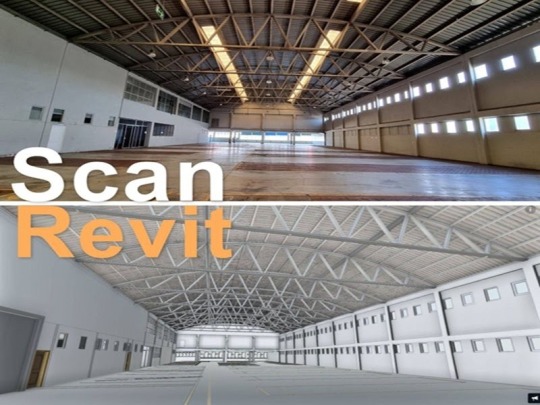
Introduction to Scan to CAD and Point Cloud to BIM Modeling Services:
Scan to CAD involves the conversion of scanned data from physical objects or environments into Computer-Aided Design (CAD) files. On the other hand, Point Cloud to Building Information Modeling (BIM) entails the transformation of three-dimensional point cloud data into intelligent BIM models. These services collectively offer a comprehensive solution for modern design challenges. Scan to CAD processes capture detailed spatial information of physical structures with remarkable precision. This data is then transformed into digital CAD models, providing designers and engineers with a comprehensive virtual representation of the scanned environment.
Enhanced Accuracy and Precision:
One of the key advantages of Scan to CAD and Point Cloud to BIM Modeling Services is their ability to capture intricate details with unparalleled accuracy. By utilizing advanced scanning technologies such as LiDAR (Light Detection and Ranging) and photogrammetry, every nuance of the physical environment can be accurately captured and translated into digital models, ensuring precise representation in the design phase.
Efficiency and Time Savings:
Traditional methods of manual measurement and drafting are not only time-consuming but also prone to errors. Scan to CAD and Point Cloud to BIM services streamline the design process by significantly reducing the time required for data acquisition and model generation. This efficiency translates into faster project delivery timelines and cost savings for stakeholders.
Seamless Integration with Existing Workflows:
These services seamlessly integrate with existing design workflows, enhancing collaboration among architects, engineers, and construction professionals. The compatibility of CAD and BIM models ensures smooth communication and data exchange throughout the project lifecycle, from conceptualization to construction and beyond.
Improved Visualization and Analysis:
By converting point cloud data into intelligent BIM models, designers gain access to powerful visualization and analysis tools. This enables them to explore different design scenarios, conduct clash detection, and simulate real-world conditions with greater accuracy, leading to informed decision-making and optimized design outcomes. Facilitating Renovation and Retrofit Projects:
Scan to CAD and Point Cloud to BIM services are particularly valuable for renovation and retrofit projects where accurate as-built documentation is essential. By capturing existing conditions in detail and creating precise digital models, designers can seamlessly integrate new elements into existing structures, minimizing disruptions and maximizing efficiency.
Supporting Sustainable Design Practices:
The ability to accurately assess existing building conditions and visualize the impact of design changes contributes to sustainable design practices. By optimizing energy efficiency, material usage, and building performance, Scan to CAD and Point Cloud to BIM Modeling Services play a crucial role in creating environmentally conscious and resource-efficient structures.
Enhancing Safety and Risk Mitigation:
Accurate documentation of existing conditions through point cloud scanning reduces safety risks associated with site visits and manual measurements. Moreover, by identifying potential clashes and design inconsistencies early in the process, these services help mitigate construction errors and costly rework, enhancing overall project safety and quality.
Adapting to Evolving Industry Trends:
As the AEC industry continues to embrace digital transformation, Scan to CAD and Point Cloud to BIM Modeling Services are poised to play an increasingly integral role. From augmented reality (AR) and virtual reality (VR) applications to the integration of artificial intelligence (AI) for automated modeling tasks, the possibilities for innovation are vast and evolving.
Conclusion:
Rvtcad represents Scan to CAD, and Point Cloud to BIM Modeling Services represents a paradigm shift in the way architectural and construction projects are conceived, designed, and executed. By harnessing the power of advanced scanning technologies and intelligent modeling algorithms, these services empower designers to push the boundaries of creativity while ensuring accuracy, efficiency, and sustainability in every project they undertake. Embracing these transformative capabilities is not just a choice but a necessity for staying competitive in today's rapidly evolving AEC landscape.
#Scan to cad#point cloud to bim modeling#scan to bim#point cloud to bim#bim services#3d laser scanning#bim laser scanning#scan to revit#as-built drawing#as-built drawings#point cloud to cad
0 notes
Text
Get the Best Laser Scan to BIM Services in Bristol, UK
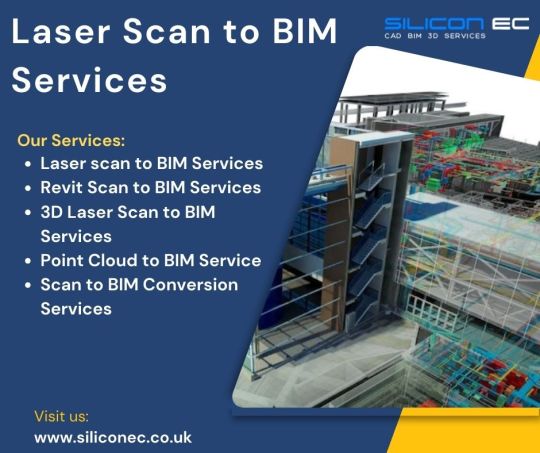
Silicon EC UK Limited offers comprehensive Laser Scan to BIM Services in Bristol, UK, catering to the evolving needs of the construction and architectural industries. Our experienced team of engineers and BIM specialists transforms raw scan data into intelligent 3D models, seamlessly integrating them into the BIM environment. Our team of experienced professionals utilizes state-of-the-art equipment to conduct comprehensive laser scans, generating highly detailed point clouds that serve as the foundation for creating accurate 3D models. Our services empower clients to streamline project planning, enhance construction coordination, and minimize errors, ultimately leading to improved project outcomes and cost savings. Our commitment to excellence, combined with a collaborative approach, ensures seamless communication and transparency at every stage of the BIM project.
Supports and software facility:
Our dedicated workforce comprises steadfast QC heads, proficient Team Leads, and experienced Engineers who possess extensive expertise. Our BIM Services adeptly utilize cutting-edge software, including AutoCAD, Tekla Structure, and Revit Structure, showcasing a commitment to staying at the forefront of technological advancements.
We are a BIM Engineering Company that presents BIM Engineering Services Bristol and other cities covering London, Liverpool, Manchester, York, Leeds-Bradford, Glasgow, Newcastle, Sheffield, and Sunderland.
Choose Silicon EC UK Limited for comprehensive Laser Scan to BIM Services in Bristol, UK, and experience the difference in precision, reliability, and innovation for your next Building project.
For More Details Visit our Website:
#Laser Scan to BIM Services#Revit Scan to BIM Services#3D Laser Scan to BIM Services#Point Cloud to BIM Service#Scan to BIM Conversion Services#Scan to BIM Services#BIM Services#Building Information Modeling Services#Building Information Modeling#BIM#BIM Services Bristol#BIM Engineering Services UK#BIM Services UK#Laser Scan to BIM Services Bristol#Scan to BIM Services UK#CAD Design#CAD Drafting#CAD Drawing#Engineering Services#Engineering Company#Engineering Firm
0 notes
Text
We are committed to offering our Revit Content Creation services and VDC (Virtual design construction) services leading to efficient, sustained, and growth-oriented development to help our clients.
#3d modeling services#bim outsourcing companies in india#bim outsourcing services#bim services#virtual design construction services#bim services provider#architectural design#scan to bim#scan to revit
0 notes
Text
Point Cloud to BIM Services for Land Surveyors
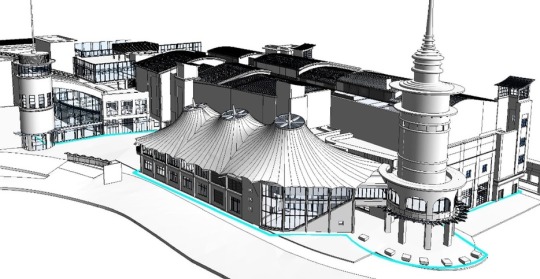
HitechDigital is a leading BIM service provider specializing in Point cloud to BIM services, developing as-built Revit models and CAD drawings. We convert 3D laser scans captured by Matterport, Faro, Leica, Trimble, Truescan, 360 photos etc. (in .rcp, .rcs, .obj, .las etc.) into architectural, structural and MEPF 3D Revit models along with 2D CAD plans.
#laser scan to bim#point cloud conversion#point cloud modeling#point cloud to bim#scan to bim#scan to revit model
0 notes
Text
How To Improve Accuracy With Laser Scanning For BIM?
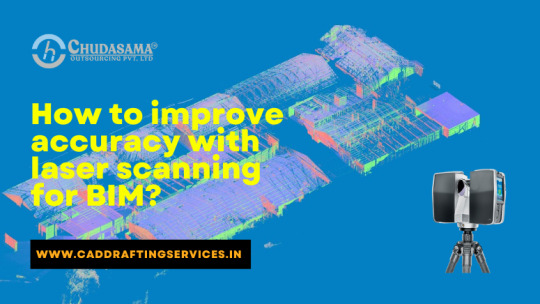
Laser scanning can be an efficient tool for creating accurate Scan to BIM Modeling. There are various factors that may impede its accuracy. The technique of scanning current circumstances and using that information to produce an exact as-built model of such circumstances is known as Point Cloud to BIM Modeling. A usual technique involves taking measurements in the area and merging them with the most recent documentation to make an as-built model. For more information, read our blog, https://caddraftingservices.in/blog/improve-accuracy-with-laser-scanning-for-bim/
#scan to bim modeling services#scan to bim modeling#scan to bim services#point cloud to bim services#laser scan to bim services#point cloud to revit services
0 notes
Text

Building Information Modeling (BIM) is an advanced architecture, engineering, and construction technology. This technology allows users to make detailed 3D models that integrate design, construction, and operational data. BIM facilitates collaboration between teams and improves project accuracy while boosting efficiency through visual building component representation, detection of conflicts, and workflow optimization. Its usage extends into facility management and lifecycle analysis, making it one of the most important tools for any modern infrastructure project.
0 notes
Text
What is BIM Architectural outsourcing & Drafting Services?
BIM Architectural Services refer to the practice of subcontracting architectural design and drafting tasks to external firms or professionals specializing in Building Information Modeling (BIM). In this arrangement, architectural firms or companies outsource certain aspects of their projects, such as creating detailed drawings, 3D modeling, or BIM coordination, to specialized service providers.
Outsourcing BIM architectural drafting services offers several benefits to architectural firms:
Cost Efficiency: Outsourcing allows firms to access skilled professionals at a lower cost compared to hiring in-house staff. This can result in significant cost savings, especially for projects with fluctuating workloads or specialized requirements.
Expertise and Specialization: BIM outsourcing firms often have a team of experienced professionals with expertise in architectural drafting and BIM technologies. By leveraging their specialized skills, architectural firms can ensure high-quality deliverables and efficient project execution.
Focus on Core Competencies: Outsourcing non-core tasks such as drafting allows architectural firms to focus on their core competencies, such as design creativity, client relationships, and project management. This can lead to improved productivity and better utilization of resources.
Scalability and Flexibility: Outsourcing provides architectural firms with the flexibility to scale their workforce up or down based on project requirements. This agility enables firms to handle peak workloads, meet tight deadlines, and adapt to changing market demands more effectively.
Access to Advanced Technologies: BIM outsourcing firms often invest in the latest BIM software and technologies to deliver innovative solutions to their clients. By partnering with these firms, architectural companies can leverage cutting-edge tools and workflows without investing in expensive software licenses or training.
Overall, BIM architectural outsourcing and drafting services enable architectural firms to enhance their competitiveness, improve project efficiency, and deliver high-quality designs to their clients. By partnering with experienced outsourcing providers, architectural firms can streamline their workflows, reduce overhead costs, and focus on delivering exceptional architectural solutions.
United-BIM Inc. is a certified SBE/MBE BIM Modeling Services Company based in East Hartford, Connecticut. Our services include BIM Architectural Services, Architectural Drafting Services, 3D Rendering Services Structural Modeling and Detailing (Rebar, Precast, others), MEP-FP Modeling and Detailing, BIM Coordination & Clash Detection Services, Revit Family Creation Services, Underground Utility Locating Services, On-site & off-site Coordination Services, Onsite & virtual meetings participation, Point Cloud Scan to BIM, CAD to BIM Services, BIM for Facility Management, Accurate Shop Drawings Creation, As-built Drawings Services, Electrical Design Services & more.
1 note
·
View note
Text
Quick Start: Point Cloud to Revit Modeling Guide
The "Point Cloud to Revit Modeling Quick Guide" offers a concise yet comprehensive overview of the process of converting point clouds to 3D models using Revit software. This guide provides step-by-step instructions, tips, and best practices for efficiently importing, processing, and integrating point cloud data into Revit, enabling users to create accurate and high-quality building models for architectural, engineering, and construction projects. Whether you're a beginner or an experienced user, this guide serves as a valuable resource for navigating the complexities of point cloud to Revit modeling effectively.
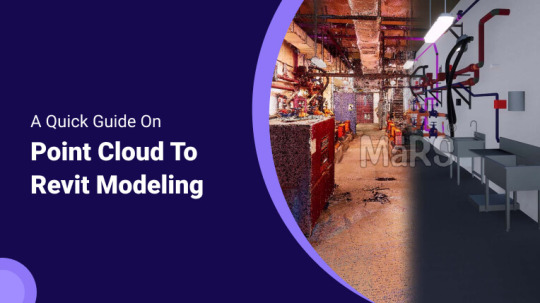
0 notes
Text
Point Clouds in Revit for Comprehensive BIM Modeling
Introduction:
In the realm of Building Information Modeling (BIM), the integration of point clouds into Revit has emerged as a game-changer. Point clouds, generated through laser scanning technology, offer a wealth of spatial data that can revolutionize the accuracy and detail of BIM models. In this article, we delve into the transformative potential of point clouds within the Revit environment, exploring how they enhance the comprehensiveness of BIM modeling.

Understanding Point Clouds:
Point clouds represent a collection of data points in three-dimensional space, capturing the precise geometry and spatial characteristics of physical environments. These data sets are generated through laser scanning devices, which emit laser beams to measure distances and record millions of points within a scene. The result is a highly detailed representation of real-world structures, encompassing everything from intricate architectural features to subtle surface irregularities.
Point clouds serve as digital replicas of physical spaces, offering an immersive and detailed view of real-world environments. Generated by advanced laser scanning devices, these data sets consist of millions of individual points, each representing a specific location in three-dimensional space. Laser scanners emit laser beams that bounce off surfaces within a scene, measuring distances and capturing the spatial coordinates of points in the process.
Integration with Revit:
Revit, renowned for its prowess in BIM modeling, provides a robust platform for integrating point clouds seamlessly into the design process. By importing point cloud data directly into Revit, architects, engineers, and construction professionals gain access to a wealth of information that serves as a foundation for their BIM models.
This integration bridges the gap between the physical and digital realms, allowing for unparalleled accuracy and fidelity in virtual representations of built environments. The integration of point clouds with Revit, a premier software in Building Information Modeling (BIM), marks a significant advancement in the construction industry's digital transformation. Revit's capabilities extend far beyond traditional CAD software, offering a comprehensive platform that facilitates the creation, analysis, and documentation of building designs. With the ability to directly import point cloud data, Revit empowers architects, engineers, and construction professionals to leverage the wealth of information captured through 3D laser scanning technologies.
Enhancing Accuracy and Precision:
One of the primary advantages of incorporating point clouds into Revit is the enhancement of modeling accuracy and precision. Traditional methods of manual measurement and documentation often fall short in capturing the intricacies of complex structures. Point clouds, on the other hand, offer a level of detail that surpasses conventional techniques, enabling designers to create BIM models that closely mirror reality. From as-built documentation to renovation projects, the use of point clouds ensures that BIM models accurately reflect existing conditions, minimizing errors and discrepancies throughout the design and construction process.
Facilitating As-Built Documentation:
In retrofit and renovation projects, accurate as-built documentation is essential for informed decision-making and seamless execution. Point clouds provide a comprehensive record of existing structures, allowing designers to capture precise measurements and dimensions with minimal disruption to ongoing operations. By importing point cloud data into Revit, stakeholders can create as-built BIM models that serve as a reliable reference throughout the project lifecycle. This streamlined approach not only accelerates the documentation process but also mitigates the risks associated with inaccuracies and discrepancies in existing conditions.
Visualizing Complex Environments:
The visualization capabilities of point clouds within Revit are unparalleled, offering designers the ability to immerse themselves in highly detailed 3D representations of physical spaces. Whether analyzing existing structures or conceptualizing new designs, the integration of point clouds provides invaluable insights into spatial relationships, material properties, and architectural nuances. By overlaying point cloud data onto BIM models, designers can make informed decisions regarding spatial layout, clash detection, and design optimization, thereby improving the overall quality and efficiency of the design process.
Streamlining Collaborative Workflows:
Effective collaboration lies at the heart of successful BIM projects, and point clouds play a pivotal role in facilitating communication and coordination among project stakeholders. By centralizing point cloud data within the Revit environment, multidisciplinary teams can work collaboratively on a unified platform, ensuring that everyone has access to the most up-to-date information. This integrated approach fosters greater transparency, reduces rework, and enhances the overall efficiency of project delivery.
Conclusion:
In conclusion, Rvtcad the integration of point clouds into Revit represents a significant advancement in the field of BIM modeling. By harnessing the power of laser scanning technology, designers can create comprehensive and highly accurate virtual representations of built environments. From enhancing accuracy and precision to facilitating collaborative workflows, point clouds offer a multitude of benefits that elevate the quality and efficiency of BIM projects. As technology continues to evolve, the synergy between point clouds and Revit is poised to reshape the future of architectural design and construction.
#point clouds#bim modeling#scan to bim#point cloud to bim#bim services#3d laser scanning#as-built drawing#bim laser scanning#scan to revit#scan to cad#as-built drawings#point cloud to cad
0 notes
Text
Best BIM Coordination Services in Birmingham, UK Starting to Comfortable Price
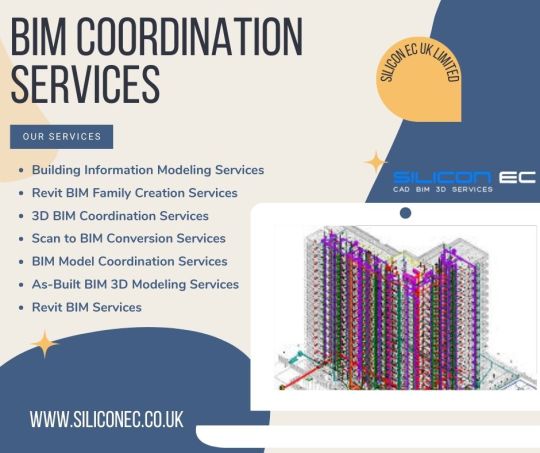
Silicon EC UK Limited is proud to be your reliable partner in Birmingham, United Kingdom providing outstanding BIM Coordination Services that are tailored to your BIM project's specific needs. Our Engineering team of highly skilled professionals is dedicated to delivering unparalleled BIM Engineering Services that streamline your workflow, enhance collaboration, and optimize project efficiency. Our experts ensure seamless coordination of various Revit BIM Design disciplines, reducing clashes and enhancing overall project efficiency. We offer comprehensive training programs to ensure a seamless transition to BIM workflows. We tailor our BIM Services to meet your specific project needs and requirements, offering flexibility and expertise. We would be happy to discuss your specific needs and requirements.
Choose Silicon EC UK Limited for BIM Coordination Services in Birmingham, UK, and experience construction excellence like never before. Contact us today to discuss your project requirements and take the first step towards a successful and streamlined construction process.
For more details visit our website:
#Building Information Modeling Services#Revit BIM Family Creation Services#3D BIM Coordination Services#Scan to BIM Conversion Services#BIM Model Coordination Services#As-Built BIM 3D Modeling Services#Revit BIM Services#BIM Coordination Services#BIM Modeling Services#BIM Coordinated model#BIM Services Company#BIM Coordination outsourcing company#BIM Coordination#BIM Coordination Services in Birmingham#BIM Coordination Birmingham#3D BIM Coordination Services in Birmingham#3D BIM Coordination in London#MEP BIM Coordination Services London#MEP Coordination Services Birmingham#MEP BIM Coordination in Birmingham#MEP BIM Coordination Services#BIM Coordination Process Birmingham#MEP Coordination Services#BIM model Coordination Birmingham#BIM modeling Services in Birmingham#BIM model Coordination#MEP BIM Coordination#BIM Coordination Process
0 notes
Text
📡 5 Things to Know About 3D Laser Scanning in AEC 🏗️
Thinking about using 3D Laser Scanning for your next construction or renovation project? Here are 5 must-know facts that could save you time, money, and mistakes:
🔹 1. It’s All About Accuracy Laser scanning captures millions of data points to create precise point clouds with millimeter-level accuracy—ideal for as-built documentation.
🔹 2. Scan to BIM is the New Standard The point cloud data can be imported into software like Revit to create intelligent BIM models that reflect real-world conditions.
🔹 3. Time-Saver for Renovations & Retrofits Forget the tape measure—laser scanning speeds up surveys and helps avoid costly surprises during design and construction.
🔹 4. Perfect for Clash Detection Scan existing conditions to spot clashes between new and existing MEP, structural, and architectural elements before construction begins.
🔹 5. Great for Infrastructure & Civil Projects From bridges to railways, laser scanning captures complex environments quickly and integrates seamlessly with Civil 3D and GIS tools.


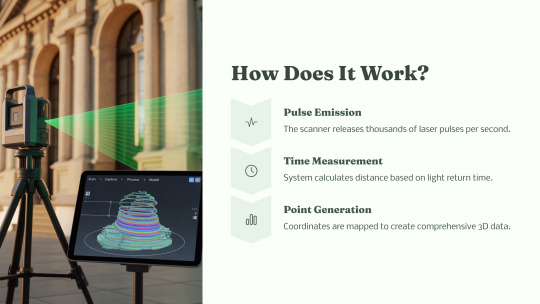
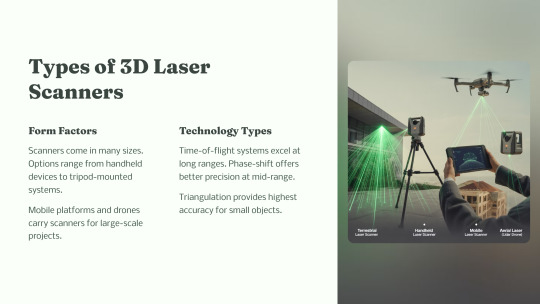



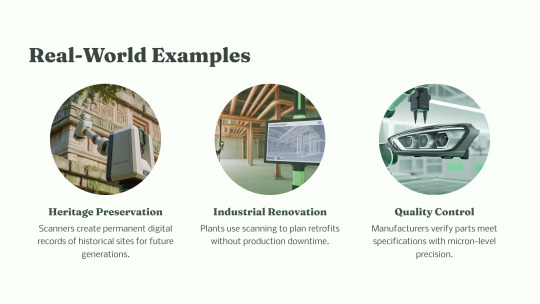
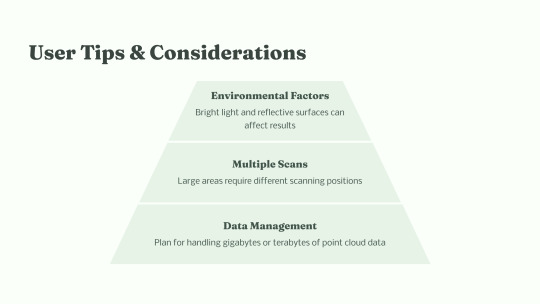

#building design#architecture#3d laser scanning#3d scanning#laser scanning technology#building information modeling#digital twin#architectural design
0 notes